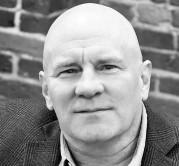Borrowing––as a leadership tactic!

One of the most popular segments in my keynotes and workshops is “The 5 Rings.” This is a set of tactics I originally developed to help martial artists access the underlying power of any effective technique or style.
These tactics work just as effectively––maybe even more so, in leadership.
The most difficult tactic to master is “borrowing.”
Understandably, the concept of “borrowing” is very popular when I present to CU groups! However, in this case we’re not taking about how to increase lending––it’s about how to maximize the productive output of everyone in your organization.
Here’s an example from self-defense:
Instead of blocking, (opposition), you step inside the arc of a punch, intercepting the strike without diminishing or even deflecting it’s power. Then, with expert timing and position, you turn your hips adding your power to energy you borrow from your attacker. You blend your power with his and …
… wham! He’s flat on his back.
This type of technique requires expert balance, focus and timing. You’ve got to master control of combined forces—both yours and your attacker’s.
Borrowing is the art of recognizing and exploiting opportunities to combine the energies of those around you, plus your own, to create an exponentially more powerful outcome. That is obviously a powerful and attractive concept to a leader!
In our self-defense example, you borrow the physical energy of an attacker. Leaders can borrow energy from an adversary too—but borrowing can also be an effective tactic when you’re dealing with entrenched opposition from allies, such as fear of change or resistance to innovation.
You can borrow from the people who are with you as well as those who might be against you. It’s similar to leverage in that you’re multiplying force by utilizing material and human resources to the best advantage, but borrowing involves a higher level of understanding, tactical expertise, and timing.
With leverage, you can literally jam a bar under a rock and pry it out. With borrowing, you’ve got to position yourself in exactly the right place at exactly the right time—and move in precise harmony with the forces around you.
You could employ other tactics to manage change or deal with threats or challenges:
Opposition:
This is the top down approach—command and attempt to control. Issue the orders and just make sure people carry them out. If they don’t like the changes, they can leave.
How do people generally react under those conditions? What damage does this do to the culture and credibility of the organization?
Deflection:
“You’ve all done a great job and we appreciate your efforts and suggestions, but the company must move in a different direction.”
Really? Does anyone truly believe that kind of statement, even if it’s true?
Leverage:
A simple application of leverage would be to call in key players of your management team and representatives from the front lines and solicit their input. Now you’re starting to leverage the expertise and perspectives of the people on your team to help ease the transition.
Borrowing gives you the best “ROI.” That is, the most output power for every ounce of input energy invested.
If I want to borrow the power of my attacker’s punch, I’ll try to draw him into telegraphing the punch. I want him to throw a big punch—one that will give me more power to use against him!
In leadership—instead of waiting to respond to inevitable opposition, you proactively solicit maximum input from those who may fear or resist the change.
And make it personal! Ask these questions:
“How will this change impact you?”
“How will it affect your performance?”
“How can you help us implement this change most effectively with the least amount of pain?”
Create allies early in the process who will give honest feedback and support key decisions along the way, unless they see a better course of action, in which case you will welcome their suggestions and sincerely consider their opinions.
As I said, this borrowing requires expert balance, focus and timing.
Balance—you have to be well grounded and know as much about what you’re proposing and the possible outcomes before you embark on any significant change.
Focus—pay attention to all the possible implications and impacts and concentrate your efforts where they will produce the most positive results.
Timing—engage stakeholders early in the process and adjust to any shifts, reactions or changing conditions and circumstances in real time, as they happen, throughout the entire process.
Borrowing is about getting all energies working in the same direction. In an organizational setting, this guiding force is usually the “vision.” At first this may come from the founder. Later the organization vision can evolve to include input from many parties at every level. The organization’s vision should be a living thing––evolving and adapting to keep the organization relevant, responsive to changing conditions, new challenges and opportunities.
It is the vision that keeps the organization, its processes and most important, its people all moving in the same direction.
When you employ “borrowing,” talents, skills, intentions and creativity are all moving toward the same objective. Each individual contributes and those contributions multiply.
The resulting output power is exponential.





